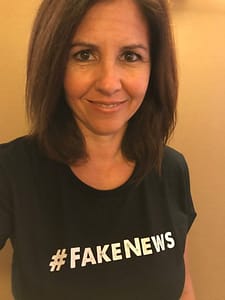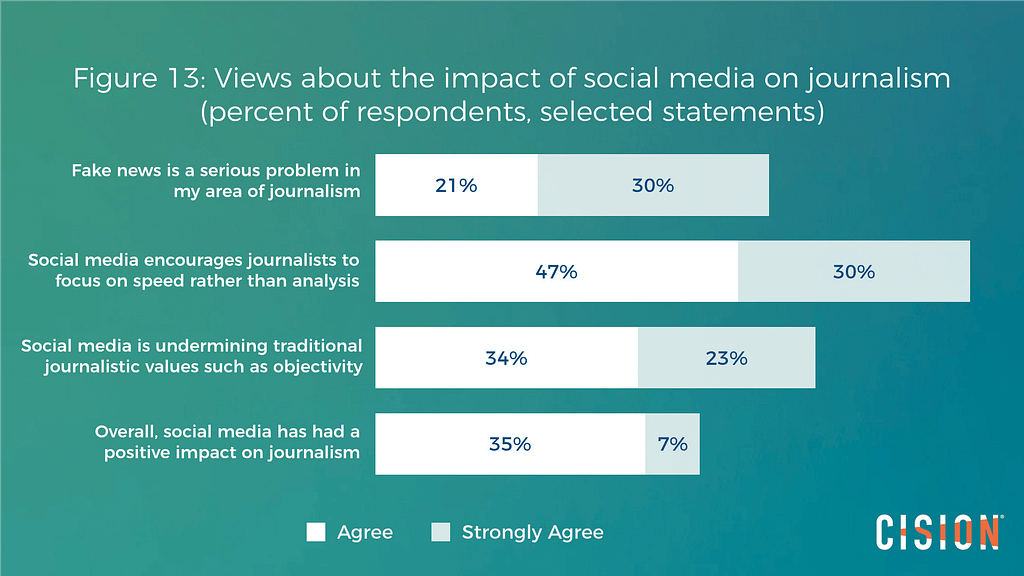By Kathy Walsh, Director of Marketing
 Recently I attended the Public Relations Society of America’s International Conference in Boston and one of the sessions I attended focused on the topic of fake news. This post highlights some key takeaways shared by co-presenters Lisa Arledge Powell of Ohio-based MediaSource and Robert Mackle, Director of Media Relations for OSU’s Wexner Medical Center—but first, let’s take a look at what “fake news” truly means and why the term has become so popular.
Recently I attended the Public Relations Society of America’s International Conference in Boston and one of the sessions I attended focused on the topic of fake news. This post highlights some key takeaways shared by co-presenters Lisa Arledge Powell of Ohio-based MediaSource and Robert Mackle, Director of Media Relations for OSU’s Wexner Medical Center—but first, let’s take a look at what “fake news” truly means and why the term has become so popular.
Fake news extends far beyond traditional media outlets such as newspapers and television. Today, more people than ever are getting their “news” from social media or social sharing sites where the sources are far harder to identify, verify and control.
Fake news can be categorized as the following:
- Satire that is being misinterpreted as real news.
- Bait and click headlines that don’t reflect the facts.
- Legitimate mistakes.
- Intentionally deceptive content.
Understanding each of these categories allow you to be 1) a more informed consumer of news, 2) a better resource to your followers by only sharing legitimate content and 3) more savvy in how you react and respond to any fake news surrounding your company or brand.
One example the PRSA session presenters highlighted was a recent fake news story alleging that Budweiser was pulling its NFL sponsorship in light of the National Anthem controversy. Rather than denying the reports, Budweiser recognized an opportunity to engage with its audience and ask them directly whether the company should continue to support the NFL. The company set up a hotline for fans to voice concerns, and ultimately, based on fan feedback, decided to retain its sponsorship deal.
Fear of fake news extends beyond the average news consumer – even today’s journalists are concerned.

According to public relations and media software company Cision’s 2017 Global Social Journalism Survey, some 51 percent of respondents feel that fake news is a serious problem in their industry. According to Cision, not only are political reporters concerned, nearly half of those in the journalism profession worry about fake news, particularly those covering business and other industries.
So, what can YOU do to be prepared to recognize and respond to fake news? Here are quick tips to help spot what’s real and what’s not:
- Read more than just the headline, which is designed now more than ever to hook you. Increasingly, some journalists are financially incentivized for the number of readers who click through to read the full article.
- Assess the legitimacy of the source. One simple tool I learned is “domain authority,” which is used to weight websites in search rankings and is tied to the number of inbound links to the site from other websites. You can find domain authority rankings from 1-100 (with 100 indicating the highest authority) on sites like Moz’s Open Site Explorer. By way of perspective, cnbc.com has a rating of 95 while Bloomberg.ma (set up to confuse people into thinking it’s the real Bloomberg site) has a rating of 1 and the excite247.com site shown above has a rating of 14.
- Keep an eye out for Facebook’s new context button announced earlier in October and being piloted right now. Users will see an ‘i’ button on articles in their News Feed that, when clicked, will reveal a publisher information panel with information on sources and an option to “follow the publisher’s page, view trending or related articles, and see how that article is being shared on the platform itself.”
- Use sites like Snopes.com to verify the accuracy of certain statistics, news and other facts. Snopes is one of the oldest and most reputable sites for statistical verification and is always a good place to start.
Whether your company or brand is the target of fake news or if you don’t become one, feel free to reach out to me to discuss your concerns. I’ll make sure you have a plan in place to protect your reputational equity you’ve worked so hard to build. Your credibility and public trust depends on it!
You can reach me at kathy.walsh@fallstongroup.com or by calling Fallston Group at 410.420.2001.

